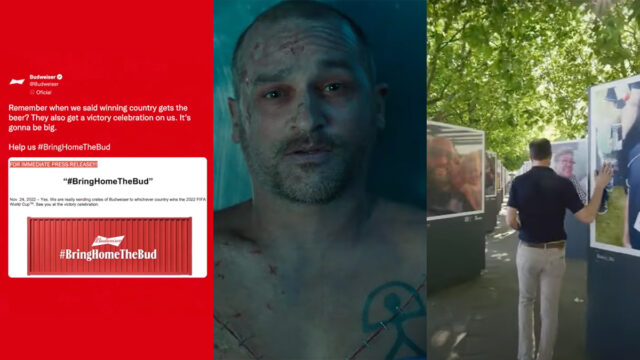Inspiration meets innovation at Brandweek, the ultimate marketing experience. Join industry luminaries, rising talent and strategic experts in Phoenix, Arizona this September 23–26 to assess challenges, develop solutions and create new pathways for growth. Register early to save.
In a week where jury deliberations for Cannes Lions come hot on the heels of the Tony Awards, I can’t help thinking that the drama of judging creative advertising would make a great number in a Broadway show. Because when it comes to debating award-winning creative, just like the rap in the musical Hamilton, there’s always intrigue around what goes on in “The Room Where It Happens.” As the lyrics go, everyone wants to know “how the game is played/the art of the trade/how the sausage gets made.” The metaphor speaks to creatives everywhere.
So if you’ve ever wondered what goes on in the jury rooms at Cannes and how the judges separate the best from the rest, here is a backstage tour.
The opinion is diverse – and it should be
The jury room experience is always inspiring. There’s a magic that happens when people with unique perspectives come together to discuss creativity. After all, that’s exactly how we sell the work to our clients in the first place; through dialogue, discourse and debate.
Ultimately, creativity is an opinion, so when we’re interrogating work, it’s important we hear diverse perspectives. And boy do we hear them! Creatives are nothing if not passionate and opinionated. Turns out, so are the CMOs, CEOs and every other human in the room. But that’s how it should be.
Creative evaluation always evolves
I’ve been a Cannes juror for the last three festivals and, as a new generation comes into the jury room, I’ve seen shifts in the way we evaluate work. Every year, something changes; our mindset, our culture, our approach.
Every generation looks at the world differently, holding each of us accountable in a different way. It pushes the boundaries of critical thinking.
This year, in-room emphasis has been on evaluating efficacy. We’ve been doing the research, looking up results and trying to validate that the work in front of us is having a meaningful impact.
Of course, that’s not always possible—some campaigns are in their infancy and the data isn’t yet there. Bottom line though—award-winning creative can’t just be a good idea; it’s got to have impact. It’s got to throw the spotlight onto something that changes the way people think or act. Today’s jurors are hot on this.
We question everything, over and over again
Deliberations are robust, with all work rigorously interrogated. It deserves nothing less.
However big the category, it’s our duty to look at the entire body of work and scrutinize everything through all the different lenses. Whether it’s the idea, the strategy or the craft, our job is to look deeper and measure against criteria.
Every year you see pieces winning over and over again across multiple subcategories. There’s no question they’re fabulous ideas. But are they the best for filmcraft? The best for innovation? The best for the whole creative kit and caboodle?
We examine everything forensically. It’s easy to take a brilliant idea and blanket the category with it. But if it’s going to clean up, it needs to knock your socks off in each of those subcategories.
Golds can come out of nowhere
There’s always standout work that grabs everyone’s attention. But there are also Golds that come right out of nowhere.
Jury rooms are full of different opinions, but the push and pull of professional debate has a remarkable knack for making disparate opinions come together. Sometimes, someone will advocate for work that you’d previously ruled out, yet when you re-evaluate it through a different lens, you suddenly go: ‘Wait a minute … that’s amazing!’ That person offers a cultural or business perspective that makes everyone value something they didn’t appreciate before. In those moments, you see a shift in the entire jury, where something you never thought would make it off the shortlist suddenly bags Gold.
Want proof? Try this. Every juror on an “awarding jury” is allowed to bring back something that isn’t on the shortlist; a personal favorite that didn’t make the original cut. Last year, one such piece was brought back by a juror…. and it went on to win Grand Prix.
That success is a testament to the dynamics of diverse human debate and the drama that occurs in “The Room Where It Happens.”
Now… how can we win that Tony?










